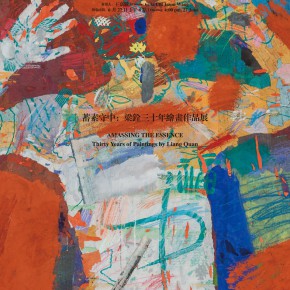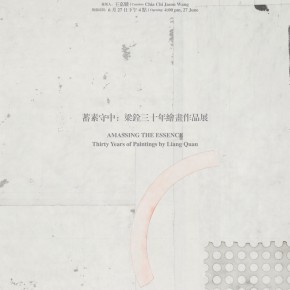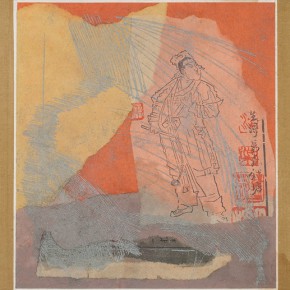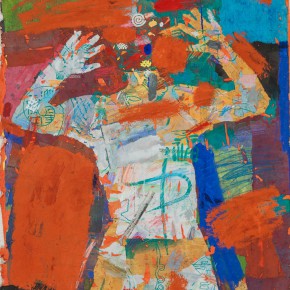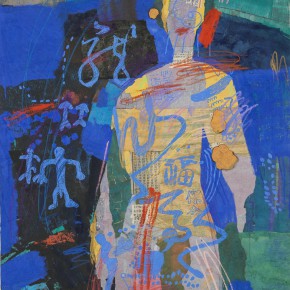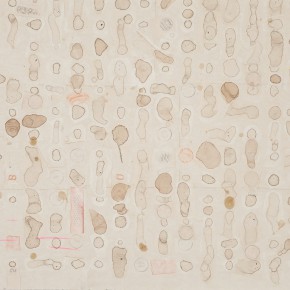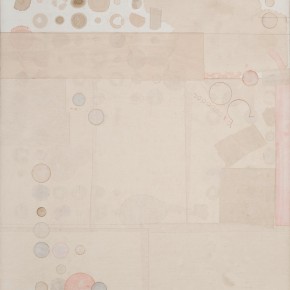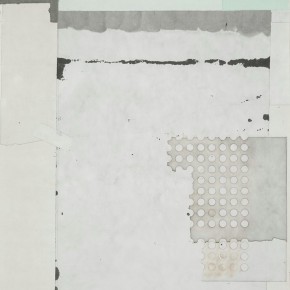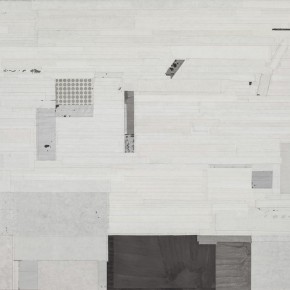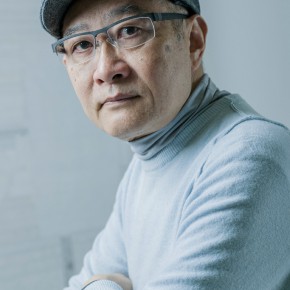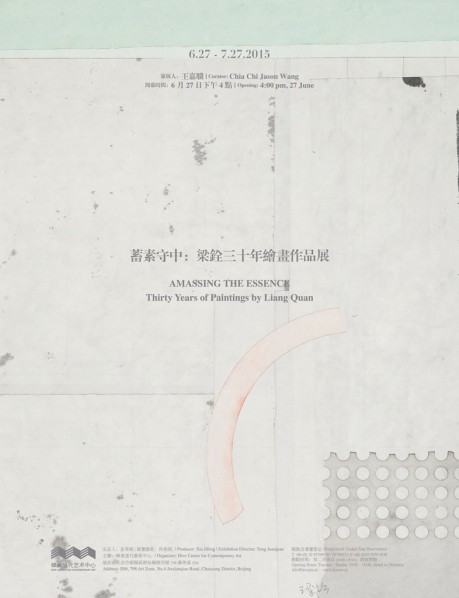
Hive Center for Contemporary Art is pleased to announce the opening of Amassing the Essence: Thirty Years of Paintings by Liang Quan on 27th June, 2015, the exhibition will present his most important works since 1982 in its 5 exhibition halls, reviewing systematically the concept of his artistic practice, and exploring the method of his practice and the causes of his aesthetics. The exhibition is curated by Chia Chi Jason Wang, a renowned scholar from Taiwan, and it will last till the 27th July.
Liang Quan is one of the first group of Chinese contemporary artists who studied in the United States after the Cultural Revolution, and he also is one of the first artists who have engaged in abstract works. The utilization of the rhetoric of dual East-West cultural heritage and intertextuality became the crux of establishment of Liang’s artistic style. Through the path of form, he retained his focus on Western modernity and contemporaneity, while the works also gradually constructed a system that differs from Western art. Drawing the experience of Western contemporary art, at the same time, he is also an artist who has used this path to travel against the current to the wellspring of Chinese art, in order to demonstrate the oriental essence of contemporary art.
Born in 1948, with ancestral home in Zhongshan, Guangdong Province, Liang Quan grew up in Shanghai. In 1964 he was admitted to the Affiliated High School of the Zhejiang Academy of Fine Arts (now China Academy of Art). In 1981 Liang Quan went to the United Sates to study printmaking at the Academy of Art College, San Francisco. In 1984, Liang Quan returned to China and took a teaching position in the Zhejiang Academy of Fine Arts printmaking department. In 1995 he left teaching to become a full-time painter at the Shenzhen Fine Art Institute in Guangdong. Liang Quan participated La Grande Astrazione Celeste ( Italy and China), Biennale of Sydney( Australia)and other important international exhibitions, he has featured solo exhibitions at the University of San Diego (U.S.A.), Mies van Der Rohe Haus( Germany), Kunst House( Germany), etc.
Liang Quan always hoped to revive the spirit of artistic refinement in the Chinese cultural tradition, pursuing profundity within the everyday and seeking to glimpse the innate beauty of nature. From 1985 to 2000, he had a period of “manipulating a riot of colors.” and based on the stylistic traits of these works, we can call it his “heavy color period.” Liang Quan’s works in this period are full of chance collages of heterogeneous objects, such as prints or rubbings serving as cultural or symbolic signifiers, which actually mix in a variety of cultural signifiers reflecting the phenomenal world, unavoidably project or allude to his own implicit feelings and thoughts about family, society, nation, history and tradition. Starting in 2000 he incorporated tea into his paintings, subtly encompassing his own philosophical perspective and life aesthetics within his works. He no longer focused on such phenomena in his art. Instead, he started putting in order his own states of mind and attitudes toward life. This was the true beginning of his abstract art. Returning from surface form to essence, returning from confusion and disorder to a calm, untroubled state, Liang Quan had found creative belonging, after coming to understand his destiny.
Using different variations in the color of tea, as well as collages of absorbed ink and pigment, Liang Quan composed uniformly delicate abstract images. This mode of formative expression is reminiscent of the ancient Chinese aesthetics of porcelain, and the subtle color gradations that occur in tea tasting, when the hues of the tea blend with the soft tones of the porcelain cup. This small-scale aesthetic of the cadence of color is purely East Asian, indeed unique to China. Forming a bridge with this traditional, distinctive aesthetic history through his art is Liang Quan’s most important contribution to contemporary Chinese ink painting and abstract art – a topic worthy of further exploration.
Returning to the purity of the materials themselves, he retained tearing, dyeing and pasting as his fundamental techniques, but to these he added the act of cutting. Meanwhile, Liang Quan began to consciously pursue a color aesthetic of plainness. This he achieved in a number of ways – by making his pigments light or thin, or by using the natural purity of a single color of ink. He achieved intricacy through simplicity, with a complex texture of wrinkles and innumerable colors underneath a base of paper made of orderly layers that were seemingly cut or torn evenly. Charged with feeling, the works were achieved by a decidedly non-mechanistic sequence of duplication. Paintings composed in this manner appear at first blush to be minimalist. Viewed more closely, they seem subdued. Carefully perused, they are imbued with lush variation.
“When I confront this mysterious world, I am powerless to prevail by strength, so all I can do is admit my weakness.” This statement of Liang Quan serendipitously dovetails with the words of the Tang-dynasty commentator Sikong Tu (837-908): “When one’s grasp is not strong, one receives in abundance.” “Drawing from the void to enter a state of wholeness,” returning to the root of things, Liang Quan persists in “amassing the essence,” affording us a glimpse of the mind as empty as the wind through a valley.
About the exhibition
Curator: Chia Chi Jason Wang
Opening: 27th June, 2015 16:00
Exhibition Dates: 2015.6.27–7.27
Venue: Hive Center for Contemporary Art
Courtesy of the artists and Hive Center for Contemporary Art, for further information please visit www.hiveart.cn.


